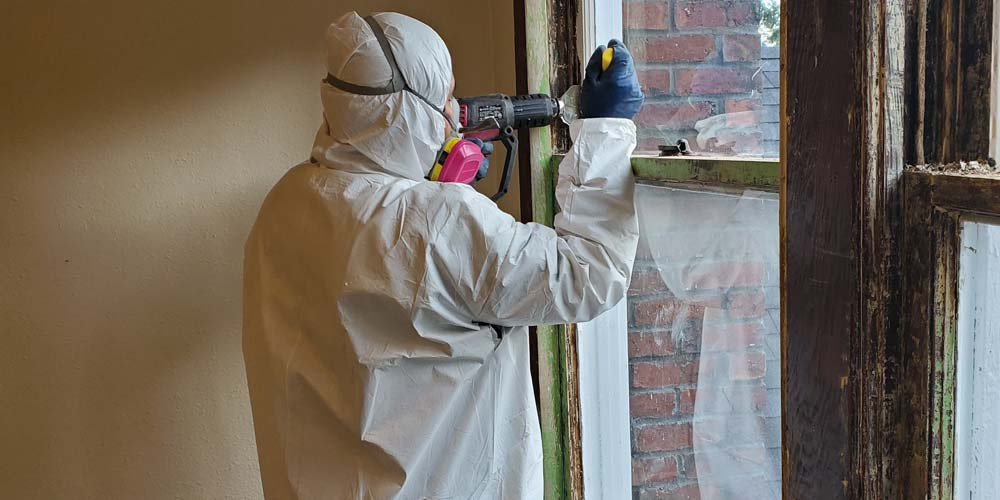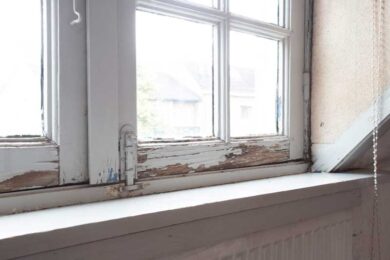Trusted DOH & HPD Lead Violation Removal in NYC-- Safeguard Your Property
Trusted DOH & HPD Lead Violation Removal in NYC-- Safeguard Your Property
Blog Article
Finest Practices for Making Certain Safe and Comprehensive Lead Violation Reduction
Resolving lead offense abatement requires a multi-faceted approach to make sure both safety and security and compliance. It's the last clearance procedure, entailing complete inspections and lab testing, that genuinely confirms a lead-free setting, making sure long-term safety. Exactly how do these methods interconnect to assure extensive lead reduction?

First Evaluation
Performing a preliminary analysis is a vital very first step in lead infraction abatement. This phase encompasses an in-depth evaluation of the residential or commercial property to identify the visibility, level, and details places of lead-based risks. Certified professionals, such as qualified lead examiners or run the risk of assessors, must carry out a comprehensive website assessment, using tools like X-ray fluorescence (XRF) analyzers to accurately detect and gauge lead concentrations in paint, dust, soil, and water.
The assessment has to also consist of a review of the building's history, previous records, and any complaints or wellness issues reported by passengers - Lead Removal Contractors. Documenting the findings meticulously is vital, as these documents form the basis for establishing an effective abatement approach. A comprehensive assessment also involves sampling and research laboratory analysis, which are vital to validate the presence of lead and guide subsequent activities
In addition, it is essential to communicate the results transparently to all stakeholders, consisting of property owners, renters, and regulative authorities. By making certain that the initial assessment is conducted with precision and rigor, experts can lay a strong structure for a targeted and reliable lead reduction procedure, inevitably safeguarding public health and guaranteeing compliance with regulative requirements.
Proper Control
Correct containment is critical to stop the spread of lead contaminants throughout abatement tasks. Properly handling control decreases the threat of lead dirt and particles migrating to non-work areas, thus protecting both the environment and individuals outside the instant job area. To accomplish correct control, an impermeable barrier of plastic sheeting must be developed around the workplace, ensuring all joints and edges are securely secured. Lead Removal Contractors. This barrier should expand from flooring to ceiling and be taped down to prevent any kind of leakages.

Normal assessments of the containment location are necessary to check for breaches or weaknesses in the obstacle. Any kind of determined issues must be quickly resolved to maintain the honesty of the containment. website link By sticking to these practices, reduction projects can effectively manage lead contamination and mitigate connected health dangers.
Employee Protection
Making certain worker protection is extremely important during lead abatement tasks to stop job-related exposure to dangerous lead fragments. Important procedures consist of using personal protective tools (PPE) such as respirators, gloves, and full-body suits particularly designed to block lead dirt and fumes. Employees should undergo detailed training on the proper usage and maintenance of PPE, including fit screening for respirators to ensure maximum efficacy.
Design controls, such as neighborhood exhaust ventilation systems, are vital in minimizing airborne lead concentrations in the work atmosphere. Management controls need to additionally be implemented, including limiting the duration of exposure and turning workers to decrease private direct exposure times. Routine clinical monitoring and organic tracking are important for very early discovery of lead absorption, allowing prompt intervention and treatment.
Additionally, establishing a decontamination procedure is crucial. Employees need to adhere to rigid decontamination procedures before breaks and at the end of their shift to avoid lead dirt from being brought outside the work area. This includes comprehensive hand and face washing with lead-specific cleaner and transforming out of polluted apparel.
Careful Clean-up
Preserving a risk-free workplace expands beyond worker defense and incorporates careful cleanup to ensure lead fragments are extensively eliminated from the site. The procedure of careful clean-up is vital in avoiding the recontamination of the eased off location and securing both present and future occupants.
To attain a detailed cleaning, all workspace need to be systematically sanitized. This involves making use of specialized HEPA (High-Efficiency Particulate Air) hoover and wet-wiping methods to capture and eliminate fine lead dirt that may have picked Click Here surfaces. It is important to cleanse all horizontal surface areas, including floorings, window sills, and counter tops, as well as vertical surface areas that may have entraped lead particles.
Workers have to wear ideal personal safety equipment (PPE) during cleaning to avoid exposure to recurring lead dirt. Utilized cleansing materials such as wipes, sponges, and mop heads should be disposed of in conformity with hazardous waste disposal guidelines.

Final Clearance
Final clearance is the important wrapping up stage of lead reduction that figures out whether the website is secure for reoccupation. This essential action entails comprehensive evaluation and testing to verify that all lead risks have been efficiently eliminated.

Final clearance testing not just secures future passengers however likewise makes sure compliance with neighborhood, state, and government policies. Furthermore, it works as a recorded validation of the reduction specialist's adherence to industry ideal methods. Guaranteeing an extensive and successful last clearance is important in guarding public health and wellness and fostering rely on the abatement procedure.
Conclusion
Making certain risk-free and thorough lead offense abatement requires a multifaceted technique encompassing preliminary assessments with sophisticated discovery techniques, reliable containment methods, rigorous worker defense protocols, and precise cleanup procedures. The last clearance phase, including comprehensive assessments and laboratory testing, is critical to confirm compliance with EPA criteria. Adherence to these ideal practices ensures a secure setting for residents, alleviates wellness risks, and supports governing needs, thereby promoting public health and wellness and safety and security in lead-affected locations.
Report this page